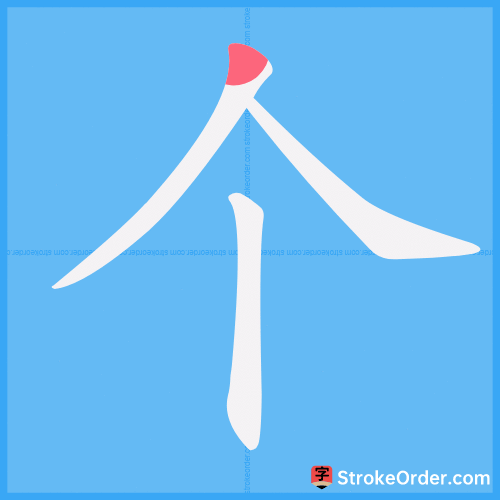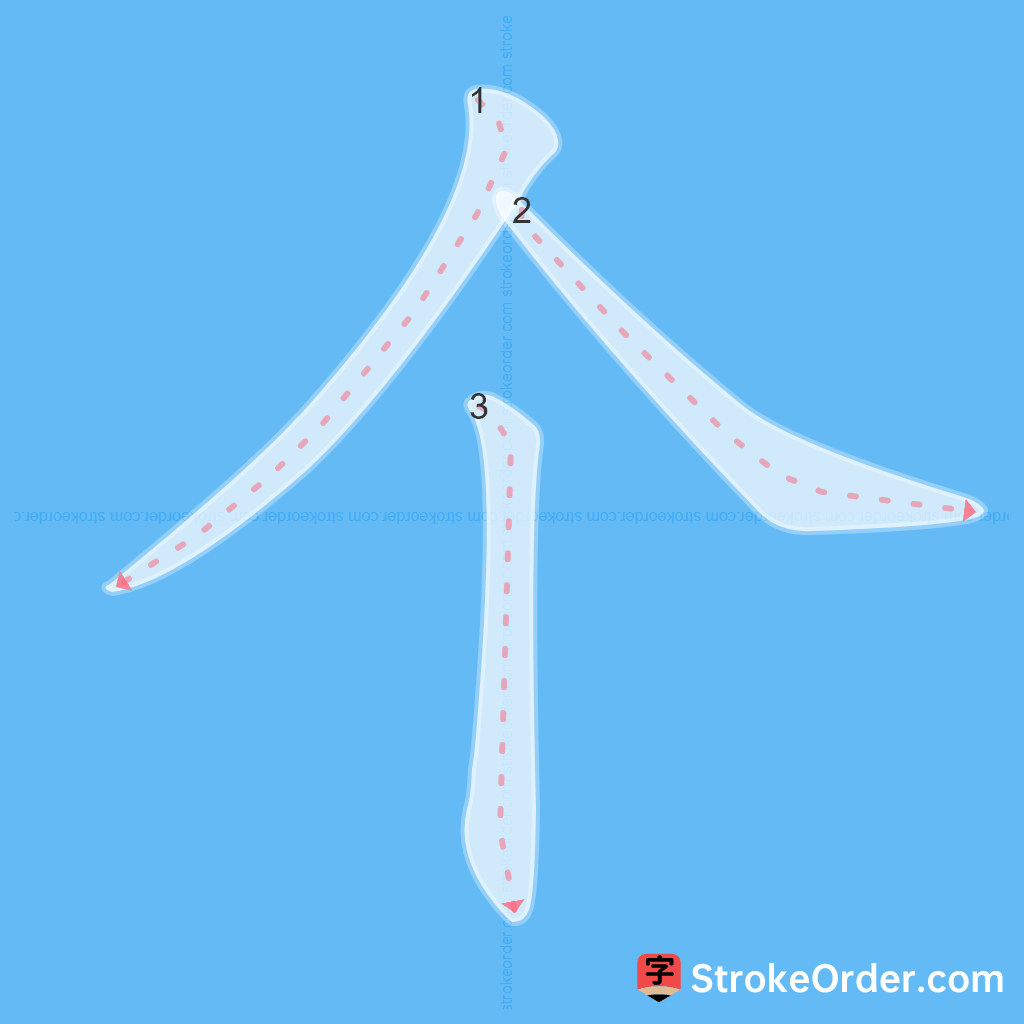个 Stroke Order
Animated Stroke Order of 个

Stroke Order Diagrams for 个

Step-by-Step Handwriting Guide for 个

Learn to Write Chinese Characters with Video Tutorials
Watch the video of writing the Chinese character "个", learn the correct stroke order (笔顺) of the character "个", and master the standard way of writing the character "个".
Free Printable Handwriting Practice with Stroke Order: 个
Printable Writing Practice Worksheet of "个" in Portrait Orientation (Tian Zi Ge)

Printable Writing Practice Worksheet of "个" in Landscape Orientation (Tian Zi Ge)

Information of 个
Pinyin
gè、 gě
Radical
人
Strokes
3 strokes
Usage
★★★★★
Definition
(a measure word) / individual
个 (gè)
1. Measure word.
量词。
2. Individual; separate.
单独的。
3. Size of the body or object.
身材或物体的大小。
4. Used between verbs and complements to strengthen tone.
用在动词与补语中间,以加强语气。
5. Common individual measure word, indicating a separate person or thing (used with nouns without specific measure words).
通用个体量词,表示单独的人或物(用于没有专用量词的事物)。
6. Also written as "箇".
字亦作“箇”。
7. Colloquially also written as "個".
俗又作“個”。
8. Used for items without specific measure words.
用于没有专用量词的事物。
9. Can be used for some items with specific measure words.
也可用于某些有专用量词的事物。
10. Related to actions.
跟动作有关的用法。
11. "一个" combines with a few nouns or verbs, placed before the predicative verb, indicating rapid or sudden action.
“一个”跟少数名词、动词结合,用在谓语动词前,表示快速或突然。
12. Used between verbs and approximate numbers for a light, casual tone.
用在动词和约数之间,以使语气轻快、随便。
13. Used between verbs and objects; often used twice in succession, sometimes followed by “的” or “什么的” to make the whole sentence feel light and casual.
用在动词和宾词之间。常常连用两个,有时还在后面加“的”或“什么的”。整个句子显得轻快、随便。
14. Sometimes indicates an instance.
有时表示一次。
15. Used as a particle.
用作助词。
16. Pronoun meaning this or that.
作为代词表示这;那 (This; That).
17. Can mean individual or single.
名词含义为单个;单独。
18. Indicates the size of the body or object.
身体或物体的大小。
19. Refers to oneself (as in 自个儿).
〔自~兒〕自己。
lit. every turnip to its hole (idiom) / fig. each person has his own position / each to his own / horses for courses / every kettle has its lid
that one / that thing / that (as opposed to this) / (used before a verb or adjective for emphasis) / (used to humorously or indirectly refer to sth embarrassing, funny etc, or when one can't think of the right word) / (used in speech as a filler, similar to "umm", "you know" etc) / (euph.) menstruation / sex / also pr. [nei4 ge5]
Input Method for 个
Pinyin
ge4
Wubi
whj
Cangjie
ol
Zhengma
odi
Four Corner
80200
Unicode
U+4e2a
Same Pronunciation Characters